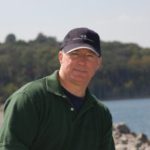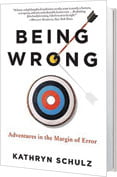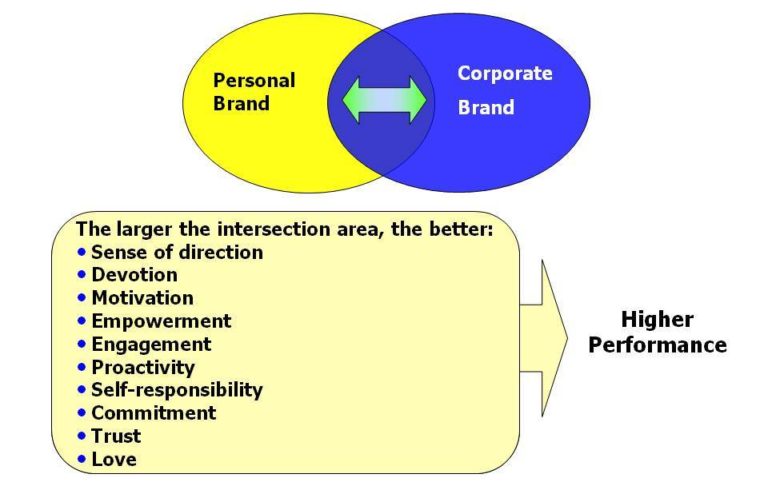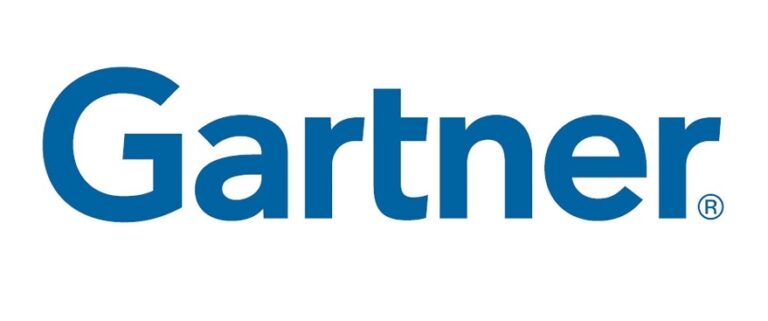“There Is ALWAYS More Than ONE Truth”… Or Is There?
As far back as I can remember in my career, which is actually to the beginning – many decades ago, my attention and efforts have been devoted to finding ways to improve the operational performance of an organization. In the beginning, those efforts were typically focused on mission-critical parts of the organization. And in this capacity, I was witness to a wide range of approaches that could be drawn upon as needed to accomplish the objective at hand. As time when on – maybe a decade or so into my career, the scope of my efforts expanded and I not only became a witness to the advent of a number of “new and improved” approaches to achieving higher-order levels of performance, but also a contributor.
What qualified these new and improved approaches as being “more capable” was the fact that they tended to encompass a more holistic perspective; where more and more of the interdependent, interacting elements of an organization were being taken into consideration when formulating the means to achieve and thereafter sustain an elevated level of performance. In other words, these approaches were more holistic in nature and encouraged performance improvement practitioners to view an organization’s various processes more as an integrated, end-to-end “SYSTEM.” And it was about at that same time when the research and academic work of folks like Dr. Russell Ackoff (along with other members of the Systems Thinking Community) highlighted the fact that treating a SYSTEM – particularly a business system – as a collection of dissociated parts, each of which might be optimized independent of any interaction with the others, was NOT the best approach possible. In fact, over the years, attempts to do so have proven to be more counterproductive than productive.
[Note: For any readers unfamiliar with Dr. Ackoff and Systems Thinking, the following is a link to a 1994 recorded presentation on the topic of systems thinking. It’s entitled “If Russ Ackoff Had Given a Ted Talk…” and it highlights the importance of viewing and treating a SYSTEM in a holistic or systems thinking manner….
Since the early to mid-90’s there has been a progressive evolution in thinking across a wide range of continuous improvement communities (i.e., Lean, Six Sigma, Theory of Constraints, BPM, etc.) as it pertains to what constitutes a best- practice approach to achieving and ideally, sustaining superior competitive performance in a market space on an enterprise-wide basis. From my current
perspective, the notion and practice of continuous improvement – as a means to achieving and sustaining superior performance throughout an enterprise, or any man-made SYSTEM, can and does span multiple approaches; each of which entails unique combinations of best-practice thinking and behaving. However, what constitutes “superior performance” is not always viewed in the same light. Across a wide range of stakeholder communities, the notion of superior performance can vary depending on the dominant interests and objectives of the various community members.
Accordingly, what’s all-too-often missing from today’s dialogue around the topic of Continuous Improvement (CI) and what constitutes a CI best-practice approach is a universally desirable answer to the question of what constitutes the ideal or target state-of-being that all CI endeavors should be directed toward achieving? To answer such a question, I’m inclined to take a page out of the STRATEGIC INTENT play book and focus attention on an organization’s stated/chosen commitment to achieving and sustaining a state-of-being which is recognized by both customers and competitors alike as being superior. Such a state-of-being represents a unique and difficult-to-mimic combination of core/distinctive competencies and competitive capabilities (i.e., adaptive combinations of [people-based] competencies, [mission-critical] processes, [enabling] technologies, and [supporting and sustaining] policies/procedures/protocols, all directed toward fulfilling/realizing a compelling mission/purpose and vision that underlies an organization’s existence). From a definitional perspective, I believe that a good choice of words for referring to such a state-of –being is OPERATIONAL EXCELLENCE. Together, these words convey – in my mind – a desired or targeted state of being which encompasses and entire organization’s existence. More specifically, they refer to the ability of a SYSTEM to realize/fulfill its intended purpose. And from the perspective of all possible stakeholders, that purpose needs to be both value-adding and enduring. If it’s not, then the likelihood of any man-made SYSTEM’s composition and function being at odds with the realities of human existence is extremely high and the notions of Continuous Improvement and Operational Excellence cannot be applied to its existence.
 Most interestingly, from my personal point of view, when the topic of pursing Continuous Improvement and Operational Excellence driven/defined competencies and capabilities is being discussed – in conjunction with what might constitute the critical elements that go into both – it’s not unusual to encounter an argument or a position that promotes the idea/thinking that “there is always [or can be] more than one truth.” A good case in point seems to arise whenever CI practitioners from different approach camps get into a discussion of the ultimate efficacy of their preferred approach(es) versus any others. And the basis of each practitioner’s argument lies in the perceived short-comings of any other approach(es).
Most interestingly, from my personal point of view, when the topic of pursing Continuous Improvement and Operational Excellence driven/defined competencies and capabilities is being discussed – in conjunction with what might constitute the critical elements that go into both – it’s not unusual to encounter an argument or a position that promotes the idea/thinking that “there is always [or can be] more than one truth.” A good case in point seems to arise whenever CI practitioners from different approach camps get into a discussion of the ultimate efficacy of their preferred approach(es) versus any others. And the basis of each practitioner’s argument lies in the perceived short-comings of any other approach(es).
In hearing those words, I’m forced to stop for a moment to consider what exactly they might mean; particularly in the context of such a discussion. For certain, in any similar discussion, there is ample room for the expression of personal opinion or perspective. But, equally for certain, there is no reason to believe or assume that a person’s opinion or perspective represents a “truth” in the matter at hand. Why might that be the case? Well, for starters, there’s a good likelihood that most readers of this article have heard the phrase… “Perception is reality.” Because we’re dealing with human beings, we should all be aware of the fallibility that’s inherent in human perception. And based on what I’ve witnessed in terms of one practitioner’s comprehensive level of understanding about any CI approach other than their own specialty, there’s all-too-often major gaps that exist in their comprehension of other CI approaches. TRUE LEAN THINKING AND BEHAVING, as it represented by the combination of the Toyota Production SYSTEM and the Toyota WAY, happens to be one of the most challenging approaches to CI to fully comprehend.
As Dr. Ackoff mentioned in his presentation on going beyond continuous improvement, Toyota is the exception to the rule. HOW SO YOU MIGHT ASK? Well, it’s because Toyota has persistently demonstrated its ability to not only do things right, but also to do the right things (e.g., Hybrid and Fuel Cell Vehicles). Accordingly, given Toyota’s presence and persistently superior performance on a global scale, the topic of “lean” (i.e., a false interpretation of TRUE LEAN THINKING AND BEHAVING) is often derided as being inadequate whenever there’s any manifestation of a short-coming with some aspect of the overall SYSTEM (i.e., recent recalls). What’s NOT being reflected in such a discussion is a truly “synthetic” appreciation for the reality or truth that exists. Toyota is manifesting TRUE LEAN THINKING AND BEHAVING in everything it attempts to do. It doesn’t always get it right; particularly when it comes to pursing discontinuous improvement. But when it finds an error in the SYSTEM, it corrects it and learns from it. It adapts itself – better than any of its competitors – to the prevailing conditions/circumstances in which it operates, and ceaselessly pursues Operational Excellence in all facets of its operations… The “house” of Toyota is always being improved!
One of the most influential factors governing human perception is the distinctive mental model of the world each individual evolves over time. Each individual’s respective model is a reflection of their perception of the world they live in, and how and why it works the way it does. Such mental models are innate creations of the human brain. And they serve an important purpose in life, those mental models allow each and every human being to navigate through their perceived world without having to expend enormous amounts to time and energy evaluating and re-evaluating it on a continual or on-going basis. For the vast majority of normally functioning individuals, our brains are designed in such a way that once we experience some aspect of that world we encounter, a mental model of that perceived experience or encounter is recorded and stored, along with all the other sensory input that might have been stimulated during the experience or encounter. In total, that mental model is referenceable again and again for instantaneous comparison in similar future experiences or encounters. And based on what happened in the first, we have a readily available “response” that can be applied as needed. Clearly, such a mechanism has helped ensure the survival of the human species over many millions of years. So, what might the problem be with those mental models?
The answer lies in what Kathryn Schulz, author of the book “On Being Wrong: Adventures in the Margin of Error,” observed about human thinking and behaving in preparation for writing the book. Based on her observations, she concluded that the vast majority of human beings (if not all) go through their entire lives living in a state of being WRONG; and not just about a few trivial things, but – for the most part – being wrong about a lot of significant things. How is that even possible, you might wonder/ask? According to Kathryn, what allows us to continue to function normally – for the most part – under such a prevailing condition or state of being-in-the-WRONG is the fact that the vast majority of us – for the most part – are NOT being routinely and dramatically confronted with the consequences of being WRONG. It’s only when we are actually confronted in a dramatic/impactful way with the negative consequences of our prevailing thinking that we become inclined to acknowledge the dangerous/damaging state of being we happen to be in and thereby, make an effort to adjust a prevailing mental model that typically underlies such a state. A good example of this human condition happens to be manifest in one of today’s most popular and ubiquitous business beliefs and mantras. It is one that postulates as the primary purpose of any public organization that of having to maximize shareholder value. Well, as is becoming increasingly evident by virtue of all the issues that have arisen in the global economy in general and the US economy in particular, such thinking has been (and now continues to be) demonstrated to reveal more of its mythical nature – which began in large measure during the second half of the 20th century with the teachings and proclamations of Milton Friedman – than of thinking that actually possesses any lasting merit or truth.
[Note: Lynn Stout, the distinguished professor of corporate and business law at Cornell Law School, is the author of “The Shareholder Value Myth: How Putting Shareholders First Harms Investors, Corporations, and the Public.” Taken from Amazon.com…
Executives, investors, and the business press routinely chant the mantra that corporations are required to “maximize shareholder value.” In this path-breaking book, renowned corporate expert Lynn Stout debunks the myth that corporate law mandates shareholder primacy. Stout shows how shareholder value thinking endangers not only investors but the rest of us as well, leading managers to focus myopically on short-term earnings; discouraging investment and innovation; harming employees, customers, and communities; and causing companies to indulge in reckless, sociopathic, and irresponsible behaviors. And she looks at new models of corporate purpose that better serve the needs of investors, corporations, and society.
See also the 2015 NYT article, Corporations Don’t Have to Maximize Profits by Lynn Stout… http://www.nytimes.com/roomfordebate/2015/04/16/what-are-corporations-obligations-to-shareholders/corporations-dont-have-to-maximize-profits].
That said, the natural question which arises in the context of positing a claim along the line that there is always more than on truth is… How can any human being naturally existing in a near perpetual state of being WRONG – when it comes to most things in their perceived world – be so certain about whatever might or might not constitute a “truth” in that perceived world? Hmmm, there seems, to me, to arise a bit of a conundrum in that question; one that – for the sake of this article – would need to be addressed straight away; particularly if humanity is to stand any chance of extricating itself from the global mess it has created… ideally in the limited amount of time that might be available. But how might one go about addressing such a difficult and confusing problem? It definitely seems to be of the wicked sort. So, first and foremost, it would seem behooving to anyone interested in engaging in a conversation/dialogue about what constitutes a “truth” to define some common ground. And, in that regard, a good starting point would be in coming up with suitable definition for the word “truth.”

Ergo, based on a review of multiple online dictionary definitions, the word “truth” refers to a quality or state of being which is in accord with reality – and such a definition does not include an individual human being’s perception of reality. Rather, something that is true – that is, exists in a state of being true or in accord with reality – is so independent of any human perception. It exits in purely objective fact. That being the case, there’s another critical question which begs answering? It’s how does any human being know what’s true versus what’s not true, or only maybe even only partially true? Ahhh, now this is where the discussion becomes most intriguing – not to mention potentially contentious. Well, rather than recreate the answer from scratch, I’ll simply refer to what was concluded by a well-known German philosopher who is most notably recognized for answering the question regarding what is true or truth, Immanuel Kant. Considered to be the central figure of modern day philosophy, his work highlighted the fact that the human experience of things is always of the phenomenal world as conveyed by the senses and that no human being has direct access to things in themselves, in the so-called noumenal world (i.e., in Kantian philosophy, something that exists independently of intellectual or sensory perception of it). And to counteract or contend with this innately human limitation, the realization/elucidation of any potential truth can only be approached via multiple points of view or perspectives via a rule-based process referred to by Kant as “synthesis”… the more varied the points of view the better the synthesis. Where these multiple points of view converge into a singularity of sensory-derived understanding and conceptual acknowledgement is where a truth is most likely to be found/revealed. Until that singularity is approached, most individual points of view – by themselves – are likely to represent little more than conjecture (i.e., opinion or judgment based on inconclusive or incomplete evidence; guesswork). Accordingly, for any one individual to approach the truth or a truth is likely to require a good deal of time and effort in working through a process of synthesis.
With this working definition of “truth”, it’s now possible to more meaningfully broach the topic which served as the context in which the notion that there is always more than one truth was brought up. The topic happened to be centered around the notions of continuous improvement, operational excellence, and purposeful/intentional transformation as being worthwhile and vital endeavors; particularly when it comes to the longer-term viability and sustainability of humanity and all of its potentially value-adding endeavors. And here again, it becomes important to pay attention to the use of linguistics or the meaning of the words being used in a discussion of a topic as complex and diverse as this one happens to be. The reason for taking such an interest in the meaning of these related terms/phrases is because in today’s business milieu, these notions seem to carry the potential for having a significant impact on sustainable outcomes – or ought to. This is particularly relevant in whatever context these notions happen to be in play; such as when it comes to their ability to counteract prevailing operational paradigms (or popular belief systems) tending to place greater emphasis on maximizing profits over developing and protecting people and the environments in which they exist, short-term performance over long-term sustainability, and rank and position over true leadership ability.
When it comes to the notions of Continuous Improvement (CI), Operational Excellence (OpEx), and purposeful/intentional Transformation, there really is no room for more than one (over-riding) truth. Despite the fact that many practitioners in these respective practice domains feel very strongly wedded to their chosen specialty or specialties (i.e., Lean, Six Sigma, Theory of Constraints, Business Process Management, Business Process Reengineering, Total Quality Management, Total Productive Maintenance, etc.), there is really only one real, singular truth that will enable businesses or any value-adding institutions to sustain themselves over the longer-term. And that truth can be synthesized from the composite of all these inter-related specialties… Businesses/institutions of any sort that intend to remain viable into the foreseeable future need to function as well/tightly-integrated SYSTEMS; and do so in a manner that allows them to readily adapt or be readily adapted to the conditions and circumstances that happen to be prevailing in their respective environment(s) at any particular point in time. It’s only as a result of being readily adaptable that any man-made SYSTEM might have any chance of being sustainable over the longer-term. And prophetically speaking, an essential aspect of being sustainable includes being able to manifest superior all-around performance throughout the longer-term.
With that as a “fundamental CI/OpEx/Transformation-related truth” to work with, or from, it then becomes possible to view the desired/needed or target state of any business/institution (i.e., a sustainable, value-adding entity) from any CI/OpEx/Transformation specialty perspective and find ways to apply that specialty in the context of pursing that fundamental truth. Does that mean the application of any single Body of Knowledge (i.e., structured methods, tools, techniques, approaches, and underlying philosophy) will be sufficient to attain and sustain the desired/needed or target state over the longer-term? The most likely answer has to be… NO! Why might that be the base, you wonder? Well, it’s because no single perspective is sufficient rich to be able to take into consideration and address the totality of the fundamental truth as stated above. Rather, a much more synthetic approach needs to be taken by all the stakeholders that are likely to exist in these practice domains.
In conclusion, specialty domain or practice practitioners who express their limited perspectives about their perceived short-comings of other specialty domains or practices are only expressing what might constitute – at best – a half-truth; one which is typically fraught with a good deal of incomplete and/or incorrect information. The fact that these half-truths may exist – based mostly on an individual’s perception of the phenomenal world – does not mean that there are many truths. Rather, it’s more a testament to the observation that Kathryn Schulz documented in her book… Most people – if not all – lead their entire lives existing mostly in a state of being WRONG. And it’s not until the vast majority of stakeholders begin to synthesize their respective perspectives into more of a common/shared perspective are we as human beings likely to approach a singular/collective truth that carries the potential to be humanity’s salvation… from our individual selves. Hopefully, the notions of Continuous Improvement and Operational Excellence will be able to rise to the occasion and be leveraged to their fullest potential in mankind’s collective pursuit of a better and more sustainable world, as opposed to simply pursuing more of the same-ol, same-ol biased and limiting self-interests.
Jay Bitsack
 As a veteran business/technology/lean transformation leader… accrued years of demonstrated top and bottom line achievement in competitive capability development/enhancement and continuous process improvement. Across a broad spectrum of industries, worked closely w/ senior execs, transformation champions/sponsors, and front-line personnel to design/deliver solutions for improving mission-critical process performance. Led major initiatives to build new core competencies & competitive capabilities related to: CRM, SCM, ERP, TQM, TPM, e-business/collaborative commerce, lean/synchronous mfg, simultaneous/concurrent eng, new product/service innovation & commercialization, IT service mgmt/delivery, and environmental health & safety. LinkedIn
As a veteran business/technology/lean transformation leader… accrued years of demonstrated top and bottom line achievement in competitive capability development/enhancement and continuous process improvement. Across a broad spectrum of industries, worked closely w/ senior execs, transformation champions/sponsors, and front-line personnel to design/deliver solutions for improving mission-critical process performance. Led major initiatives to build new core competencies & competitive capabilities related to: CRM, SCM, ERP, TQM, TPM, e-business/collaborative commerce, lean/synchronous mfg, simultaneous/concurrent eng, new product/service innovation & commercialization, IT service mgmt/delivery, and environmental health & safety. LinkedIn







